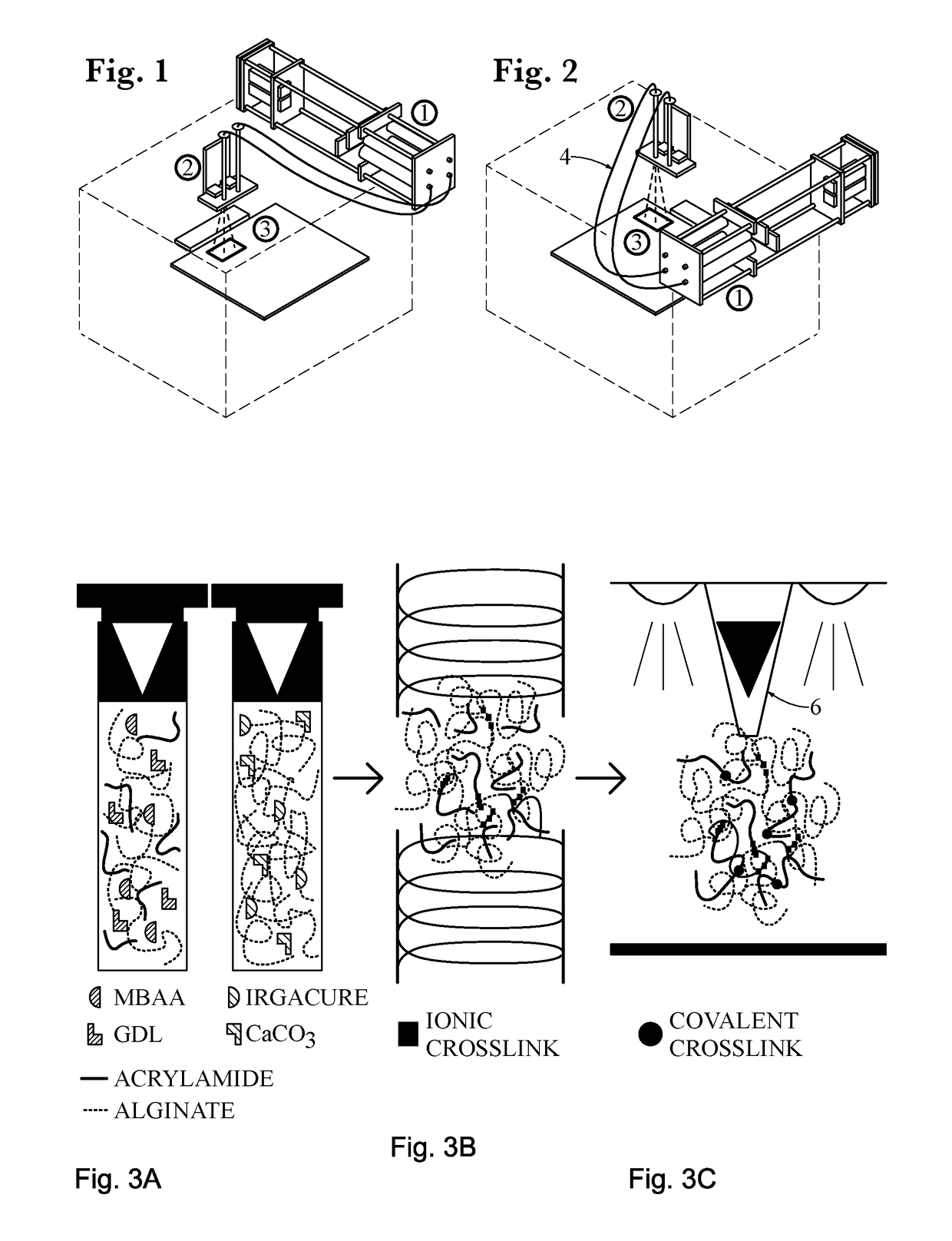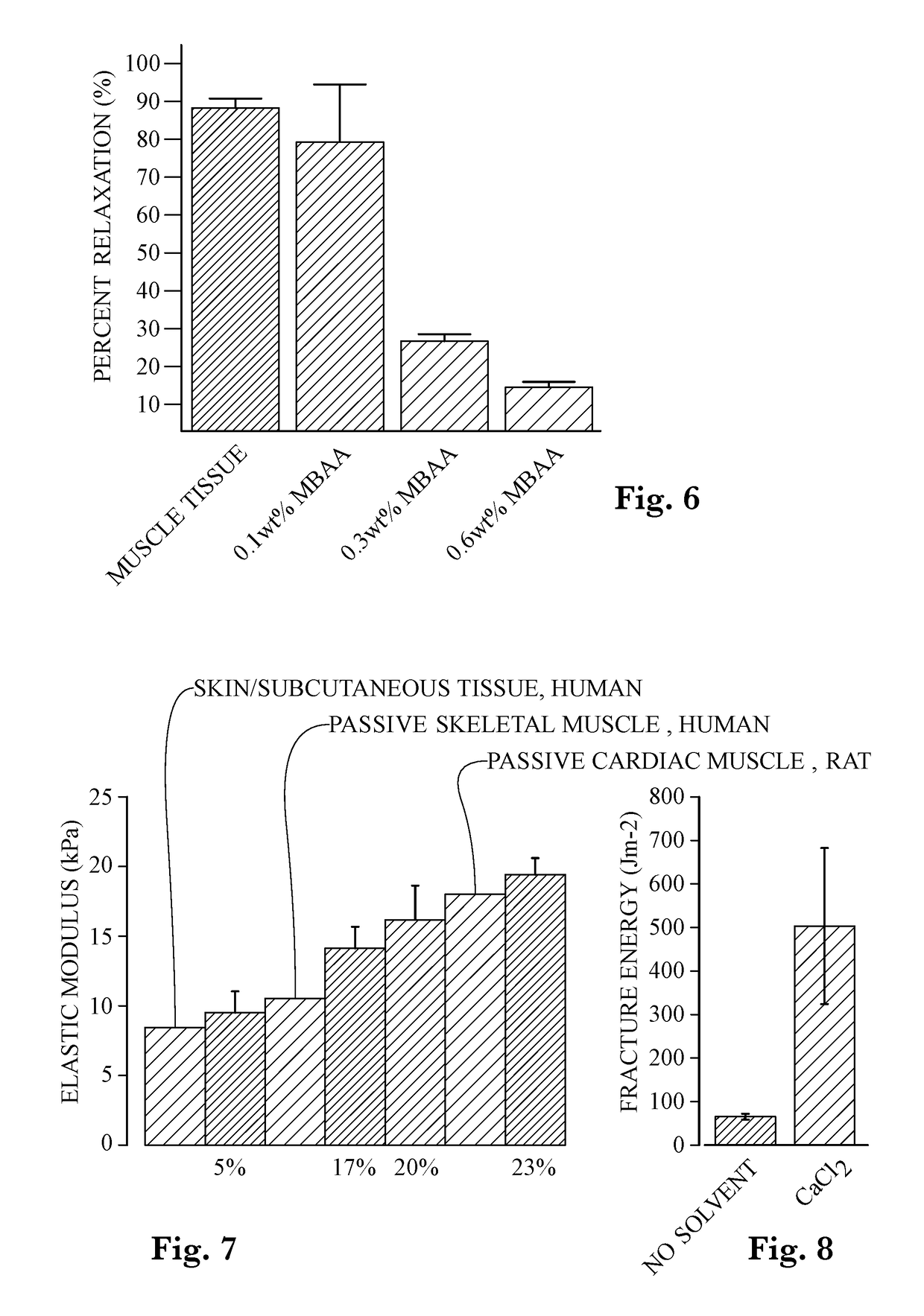Method, apparatus and formulation for an interpenetrating network polymer
a technology of interpenetrating network and polymer material, which is applied in the field of polymer formation, can solve the problems of complex apparatus and achieve the effects of low cost, good shape fidelity and increased availability
- Summary
- Abstract
- Description
- Claims
- Application Information
AI Technical Summary
Benefits of technology
Problems solved by technology
Method used
Image
Examples
Embodiment Construction
[0033]U.S. Provisional Application Ser. No. 62 / 242,490, which is the above claimed priority application, is incorporated in this application herein by reference.
[0034]FIG. 1 shows an apparatus that may be used to print an IPN hydrogel material using a dual-syringe orthogonal reactive mixture (ORM) technique. The hardware and software of a commercially available 3D printer platform (e.g., Fab@Home Model 3 Research Platform, Seraph Robotics Inc.) were modified to accommodate IPN synthesis. The conventional printer uses a print head that is slidably mounted along the length of a beam. The beam is slidably mounted near the beam's ends to a pair of spaced parallel rods, which rods are perpendicular to the beam. The beam slides along the length of the parallel rods. A nozzle that dispenses liquid is mounted to the print head. The head may be moved longitudinally along the beam, and the beam may be moved longitudinally along the rods, in a conventional manner by electro-mechanical, electro...
PUM
| Property | Measurement | Unit |
|---|---|---|
| inner volume | aaaaa | aaaaa |
| inner volume | aaaaa | aaaaa |
| inner diameter | aaaaa | aaaaa |
Abstract
Description
Claims
Application Information
 Login to View More
Login to View More - R&D
- Intellectual Property
- Life Sciences
- Materials
- Tech Scout
- Unparalleled Data Quality
- Higher Quality Content
- 60% Fewer Hallucinations
Browse by: Latest US Patents, China's latest patents, Technical Efficacy Thesaurus, Application Domain, Technology Topic, Popular Technical Reports.
© 2025 PatSnap. All rights reserved.Legal|Privacy policy|Modern Slavery Act Transparency Statement|Sitemap|About US| Contact US: help@patsnap.com



